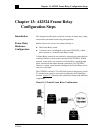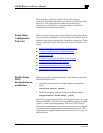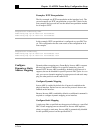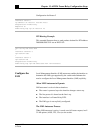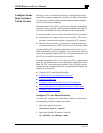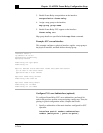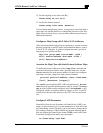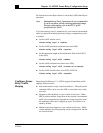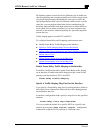
AI2524 Router Card User’s Manual
Page 13-8 August 1997
2524UM
Configure Frame
Relay Switched
Virtual Circuits
Currently, access to Frame Relay networks is made through private
leased lines at speeds ranging from 56 kbps to 45 Mbps. Frame Relay
is a connection-oriented, packet-transfer mechanism that establishes
virtual circuits between endpoints.
Switched virtual circuits (SVCs) allow access through a Frame Relay
network by setting up a path to the destination endpoints only when th
need arises and tearing down the path when it is no longer needed.
You must have these services before Frame Relay SVCs can operate:
z
Frame Relay SVC support by the service provider—The service
provider's switch must be capable of supporting SVC operation.
z
Physical loop connection—A leased line or dedicated line must
exist between the router (DTE) and the local Frame Relay switch.
You must enable SVC operation at the interface level. Once it is en-
abled at the interface level, it is enabled on any subinterface on that in-
terface. One signaling channel, DLCI 0, is set up for the interface, and
all SVCs are controlled from the physical interface.
To enable Frame Relay SVC service and set up SVCs, complete these
tasks. The subinterface tasks are not required, but offer additional flex-
ibility for SVC configuration and operation. The LAPF tasks are not
required and not recommended unless you understand thoroughly the
impacts on your network.
z
Configure SVCs on a Physical Interface
z
Configure SVCs on a Subinterface (optional
z
Configure a Map Class
z
Configure a Map Group with E.164 or X.121 Addresses
z
Associate the Map Class with Static Protocol Address Maps
z
Configure LAPF Parameters
Configure SVCs on a Physical Interface
To enable SVC operation on a Frame Relay interface, perform these
tasks beginning in global configuration mode:
1. Specify the physical interface.
interface serial
number
2. Specify the interface IP address, if needed.
ip address
ip-address
mask




